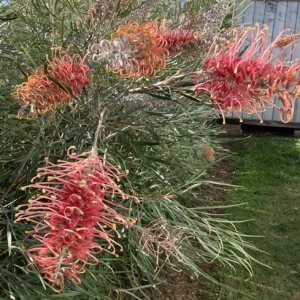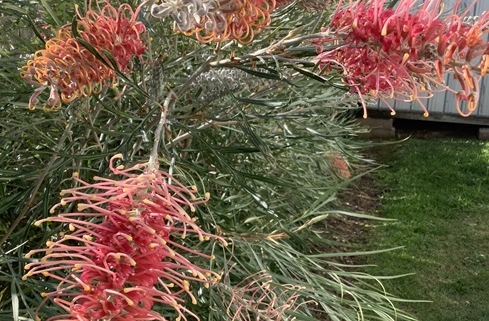Garden Tetris
by Mark Evans
 Garden Tetris is a lot like the video game, but instead of trying to arrange falling coloured blocks, it’s plants you are trying to fit together efficiently within a limited space. Like the game it can take some practice. That supposedly short plant you stuck in on the edge turns out much taller than you expected, the one you put in the shade needs more sun (or vice versa), that climber would be nicer over there instead, that plant needs dividing and those two plants would look much better side by side. Game on.
Garden Tetris is a lot like the video game, but instead of trying to arrange falling coloured blocks, it’s plants you are trying to fit together efficiently within a limited space. Like the game it can take some practice. That supposedly short plant you stuck in on the edge turns out much taller than you expected, the one you put in the shade needs more sun (or vice versa), that climber would be nicer over there instead, that plant needs dividing and those two plants would look much better side by side. Game on.
July is one of the best times to play Garden Tetris. In mid-winter, many plants will have paused their growing, exhausted their flowering and fruit/seed production and will be gathering their energy for the upcoming spring. Digging them up now will result in minimal disturbance, and they will be settled in their new position, ready to grow again when the warmer weather arrives.
Before you move a plant, it is beneficial to prune it first as moving a plant disturbs the root system reducing the plant’s ability to absorb nutrients and water. The corresponding reduction of the above ground parts makes it easier for the smaller root ball to do its job and satisfy the whole plant. The other thing to do before you move a plant is to have the new planting hole prepared and ready to go, thereby limiting the time the plant is out of the ground.
Before you dig, imagine the plant in a pot. You should aim to dig out a pot-sized root ball at least. The more roots you can bring with the plant the more successful the move is likely to be. Chop/dig right the way around the plant first, and then try and lever it out from below. Larger roots should be cut cleanly with sharp secateurs. Support the root ball whilst transferring the plant to its new hole and ensure that it is sitting at the same depth as in the old location.
Before you backfill, flood the planting hole and root ball with water and let it soak away. Backfill, then give another drink, this time with some added soil conditioner like seaweed extract or fish emulsion. Hold off on fertilising until you start to see the first signs of new growth. Game over.
Now study the garden for another year, note your next moves, and prepare to play again the following July.
Meanwhile, around the town gardens, the camellias continue to shine and the normally non- descript, hardy succulent shrubs, Crassula ovata (jade plant) are bursting as they enter peak flowering season. The banksias and grevilleas are also having a flowering flush.
In the wild places, on the sides of the road around the Triangle, the bushland is rather homogenously green at present, with very few obvious flowers currently.
Finally, this month in the vegie garden we continue catering to the cooler weather and so are mostly still limited to planting leeks, shallots or onions, peas of any description as well as broad beans and lettuce.
Finally, if you have any comments, gardening questions or plant or pest identification problems, please send them through to gardening@thetriangle.org.au and we will get back to you personally.
Happy growing.


